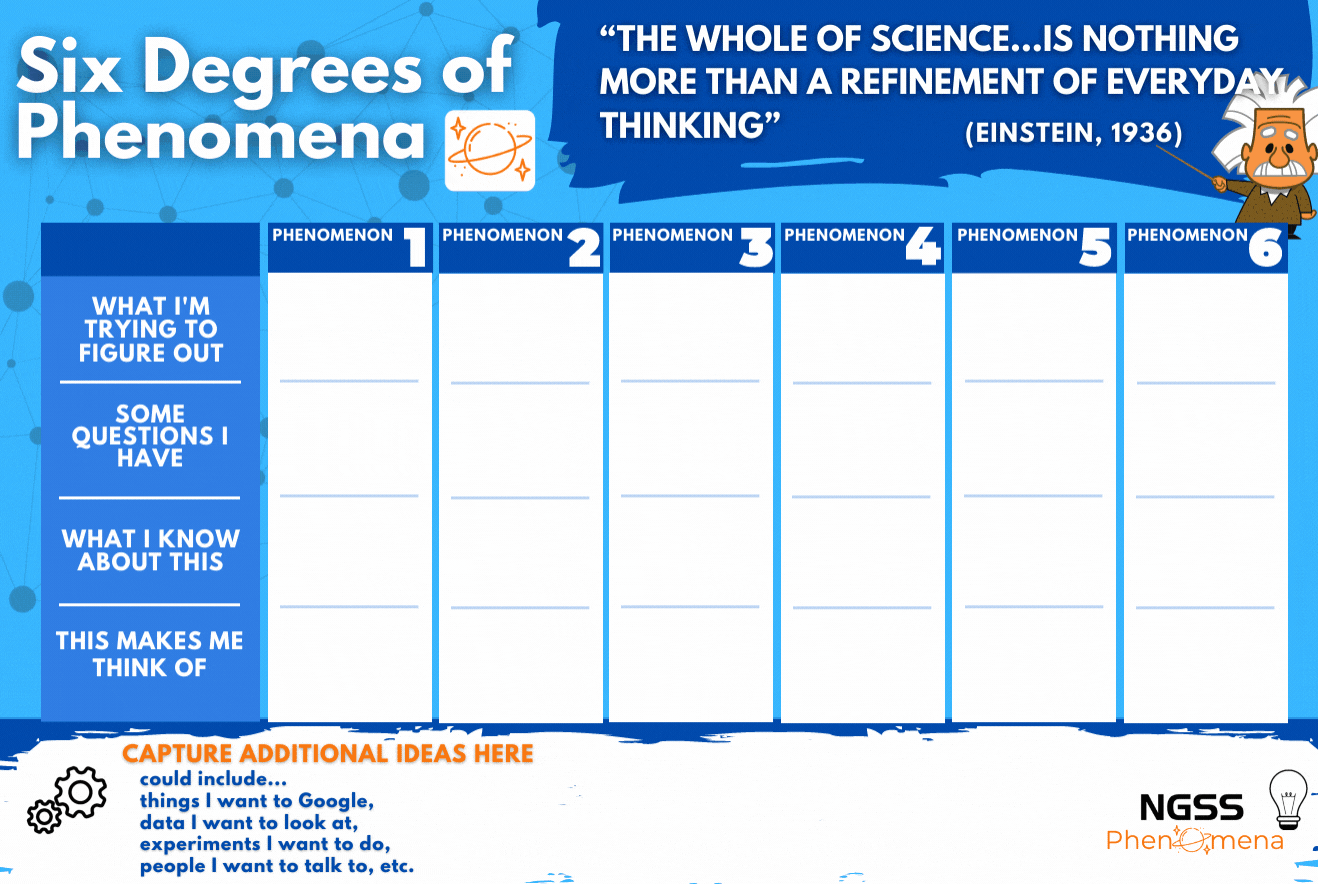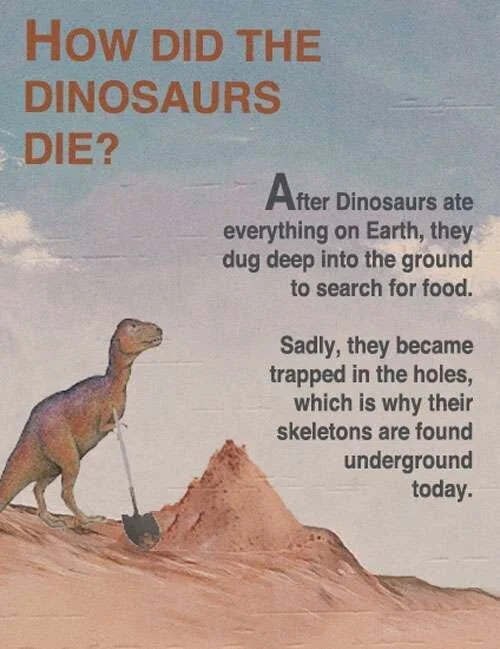Six Degrees of Kevin Bacon – Reimagining A Social Phenomenon To Think About Science
Welcome to the Meaningful Science Education blog post. Today, we are going to focus on a Science Is For Everybody! resource to support younger adults as they continue to do and think about science while at home.
Have you ever heard of the game, Six Degrees of Kevin Bacon? It’s a game based on the six degrees of separation concept or “Bacon’s Law” which suggests any two people on Earth are six or fewer social connections away from each other.
Let’s make this one fun – how can we make connections from one phenomenon to the next so students can show you their thinking and how they use ideas to play Six Degrees of Phenomena.
Science is more than just facts - it is about sensemaking and creating connections across many different areas of science and our lives
How can Students show us what they are thinking about?
With social distancing our local ecosystems have shrunk – while at the same time we’re trying to make connections across a lot of different contexts to find meaning in everything, including science.
Meanwhile, home-based learning can introduce new challenges for students – one being how to focus on school tasks when not in a classroom (not that it was easy to focus in a classroom either 😳).
In any context, it can often be a challenge to figure out how students are thinking about phenomena. One way to effectively probe student thinking is to flip the context and provide students the opportunity to frame their own initial explanations around events that are personally or culturally significant to them.
How Can we Motivate Students to Choose Events In Their own World and make connections to science ideas
When have you seen something that made you think of a science word or idea and related it to how you could explain what you saw? For example, if you saw something fall off of a bookcase, and said, “That’s gravity”. What did you mean by saying gravity? How does that word explain what you saw? And where else may you ‘see’ gravity? Perhaps when leaves are falling or if you are having a serious conversation you may say , ‘that’s heavy’ - is that a gravity thing, too? How do we shift from simply using a word to a more complete understanding of a concept?
That’s how this game works - you choose a starting point, a Launching Phenomenon and a finishing point, the Landing Phenomenon (aka your science version of Kevin Bacon).
Ok, game on - so where do I start? some options…
At first, this may seem complicated - using phenomena we often choose to give students the cognitive freedom to connect to any science they choose. It really is a great formative assessment of what students know. Can this go off the rails? Yes. Can we really connect different phenomena using science ideas? Yes. Can student ideas really be a resource in our classroom and in sense making? Also YES…
Let’s consider a few ways we can frame this activity.
To start, we have a Launching Phenomenon and we end with a Landing Phenomenon. These phenomena can be two events that are connected by a thread of important science ideas you have been working on with the class already. Therefore, the pathway to the Landing Phenomenon can show how students are connecting and using science ideas they already encountered during the school year.
Perhaps you are about to transition to some new learning or a new unit and want to see how students think about it? These connections can be a valuable resource for a teacher, as students share what they are thinking in a way that makes sense to them.
You can present two seemingly unrelated events where the connections are simply more fun and imaginative to conjecture about. Maybe we focus on what questions students ask or as an opportunity to see what interests students have.
Framing helps us - and students - focus on the key aspects of an event.
In this case, the beach is beautiful and the plants are colorful, but that doesn’t help us explain how that person appears to be flying with a kite?!?
much like science, there are few rules, but reasoning and evidence are our currency!
Are we trying to get to the end? Yup. The Launching Phenomenon is just that - it’s the first event we question, which motivates us to link together a series of events and related science ideas to reach the end, the Landing Phenomenon.
How many connections do I need to make? A bunch. No fewer than 3. You gotta hit Kevin Bacon levels and jump across a number of different phenomena, at a minimum, prior to connecting to the Landing Phenomenon.
What’s the point? Science can be crazy. There is a lot of stuff that happens and sometimes we have to stop and ask - how? And why? - did that happen. And to try and pull back a layer of this puzzle with a question and a connection.
Make it super simple for the connections - one or two words and focus on the how is this all connected and what I now know
Let’s See An Example – How the NGSS phenomena team connects Their world with Six Degrees of phenomena
Launching Phenomena - A Rich and COntextualized Event
We’ll start at the beginning. We have had this image of a species of treehopper called Cyphonia clavata as the first image in the NGSSphenomena Library for some time - this will be our Launching Phenomenon.
Like the Kevin Bacon game, you don’t have to make six connections, as long as you end up at Kevin Bacon, or in our case - the Landing Phenomenon.
Some tips for using Six Degrees of Phenomena
Science is messy - it’s not a straight line or always perfect. Each step towards understanding holds potential pitfalls which can challenge or undermine our thinking. Perhaps we encounter an event our model doesn’t accurately represent so we have to return to our model and figure out what new investigations or research we need to pursue to find evidence to revise our model.
Most importantly, have fun with Six Degrees of Phenomena - let students or children see how you think about the ways science is present in your world in all the goofy and creative ways you can find. The condensation on the inside of my windows still makes me wonder why. Share that with everyone. Do your own drawing and talk out how you connected the Launching and Landing Phenomena. Let everyone look at your drawing or document and provide feedback about your connections.
A community of learning and the culture which supports shouldn’t wither when we move beyond the bricks and windows of schools - it can be fostered anywhere and persist. With your students as active participants, we all may rethink what counts as important learning and instead highlight the types of knowledge that are seen as important to our students and their lives.
The ideas students bring to school and use everyday are vital to constructing knowledge - if left uncovered they will be left with gaps in their understanding and the classroom community loses important knowledge building resources.
Provide opportunities for students to be curious and to create on their own terms. Celebrate the resources they bring.
Focus on what students are sharing and how they are communicating about what they know and can do rather than what is missing or what you expect them to say? Measure from the student up rather than the teacher down.
What ideas do you want students to bounce around with?
Anticipate student reasoning. You know your students the best and can imagine the amazing connections they are going to make. Build from there.
Have a strategy for sharing ready - maybe students work on this with a partner or will they be expected to share with the whole group?
Students Share Their Six Degrees of Phenomena With Other Students and Get Feedback
However, students can use whatever format they would like - they can make a poster, write on the back of a sheet of paper, use their Google Classroom - anything! If students are able to connect online maybe even certain columns or ideas are submitted back to the community of learners first for feedback.
This template is designed to get students thinking about more than just a video - the purpose is to shift the lens to the big picture and bigger science ideas.
This template is just a guide and is modifiable, however the My Model Needs to Include section should be shared with students.
One way to share with students is have them use any sheet of paper and use the template to help them start modeling. A photo can be taken and shared with another student for feedback.
We would love to see what your students come up with so share below!
Post written by Chris Zieminski and TJ McKenna for ngssphenomena.com
Comment below, or email [email protected].
















